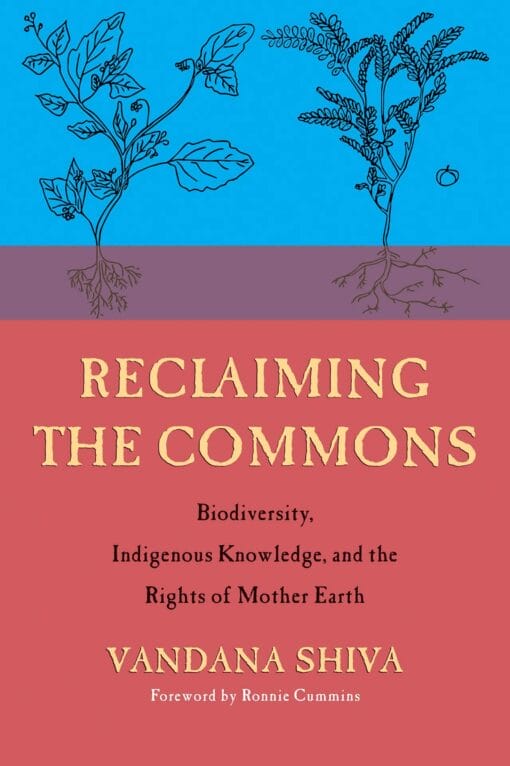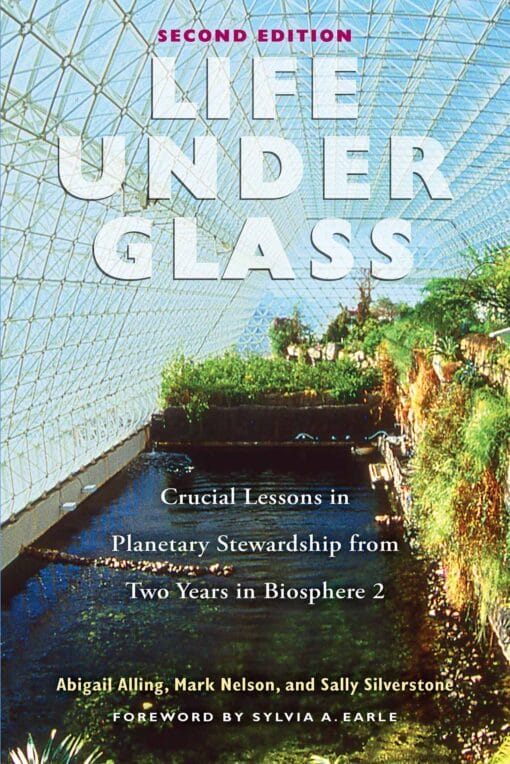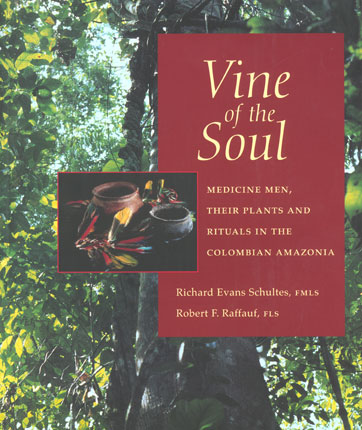This chapter describes the many ways in which natural systems protect people from extreme events.
Pages 221-224. At the start of this chapter I write about the relative damage caused by Hurricane’s Katrina and Rita. This part of my book was informed by Mashriqui, H. S. et al. (2007). Coastal wetlands reduced storm surge from hurricanes. Unpublished. I was passed this paper by one of Hassan Mashriqui’s co-authors and although it was unpublished I judged that the material contained within it was rigorously presented and analysed, and so decided to include some of its findings in this chapter.
Pages 225-226. I mention several pieces of research describing how areas with intact coastal mangroves and/or coral were more protected from the impacts of the 2004 Indian Ocean tsunami that those areas without. In relation to the impacts on the coast of South-east India I drew on work from Finn, D. et al. (2005). The Asian Tsunami: a protective role for coastal vegetation. Science, Vol. 310. 643.
View Paper
A second source can be found in: Kathiresa, K. and Rajendran, N. (2005). Coastal mangrove forests mitigated tsunami. Estuarine, Coastal and Shelf Science Vol. 65. 601-606. On the impacts on the coast of Sri Lanka see this paper: Fernando, HJS. et al. (2005). Coral Poaching Worsens
Tsunami Destruction in Sri Lanka. Eos. Vol. 86, No. 33. 301.
Page 228. On some of the challenges involved in replanting mangroves, see: Check, E. (2005). Roots of Recovery. Nature. Vol. 438. 15. 910-911.
View PaperPages 225-228. For readers wishing to delve deeper into the literature on the extent to which trees can mitigate the impact of tsunamis, FAO has produced a very helpful bibliography.
View BibliographyPage 227. I mention a figure sourced from a UNEP report estimating how healthy coastal ecosystems can take between 70 to 90 per cent of the energy out of a wind generated wave. UNEP-WCMC (2006) In the front line: shoreline protection and other ecosystem services from mangroves and coral reefs. UNEP-WCMC, Cambridge, UK.
View ReportPages 227-228. For more on how the presence of sea otters helped to protect the coast at Barkley Sound in British Colombia, Canada, see this web site.
raincosteducation.orgPage 228. On the extinction rate for corals being higher than for any other group, see this article in Time Magazine. There are ways from here into the more technical literature.
Page 228. For more information on how sunscreens can negatively impact on corals, see: Danovaro, R. et al. (2008). Sunscreens Cause Coral Bleaching by Promoting Viral Infections Environ Health Perspect. 2008 April; 116(4): 441–447.
View PaperPage 229. For more background on the role of rabbitfish in coral reef ecosystems, see for example: Hoey, AS. and Bellwood DR. (2011). Suppression of herbivory by macroalgal density: a critical feedback on coral reefs? Ecology Letters. Vol. 14, Issue 3. 267–273. There is a lot of other material on line as well.
View PaperPage 230. I mention how speculation emerged following the passage of Hurricane Sandy over New York in late 2012 as to the possible role that could have been played by oyster beds in mitigating the impact of the storm. This piece for example appeared in the New York Times.
View ArticlePages 230-231. Belize’s coral and mangrove systems have a huge economic value for the country. The figures I cite on this subject come from a WRI/WWF report. Cooper, E. et al. (2009). Coastal Capital: Belize. The Economic Contribution of Belize’s Coral Reefs and Mangroves. WRI Working Paper. World Resources Institute, Washington DC. 53 pp.
View PaperPages 231-232. The figures that Robert Costanza presents on the economic value of mangroves and corals can be found in: Costanza, R. (1997 The value of the world’s ecosystem services and natural capital. Nature 387, 253-260.
View PaperPage 232. The estimate that marine protected areas cost on average $775 per square kilometer per year comes from: Balmford, A. (2004). The worldwide costs of marine protected areas. Proceedings of the National Academy of Sciences of the United States of America. Vol. 101 no. 26. 9694–9697.
View PaperPage 233. For the source on the comparative economic value of intact mangroves compared to their conversion to shrimp-rearing ponds, see: International Sustainability Unit (2012). What price resilience? Towards sustainable and secure food systems. International Sustainability Unit, London. See the case study on P59.
View ReportPages 233-234. For the source of the estimate that adapting to climate change in coastal areas will cost $26-89 billion by the 2040s, see: Nicholls, R. et al. (2010). Economics of Coastal Zone Adaptation to Climate Change. Discussion paper number 10. World Bank, Washington DC.
View PaperPage 234. For more information on the likely loss of land to the sea in Sarawak as a result of peatland drainage, see: Wetlands International (2010). A quick scan of peatlands in Malaysia. Wetlands International-Malaysia.
View ReportPage 235. For a source on the level of insurance losses in 2011 caused by natural events, this press release from Munich Re provides some of the basics.
View Press ReleasePage 237. For the source of numbers on the impact of forests in mitigating floods, see: Bradshaw, C.J.A. et al. 2007. Global evidence that deforestation amplifies flood risk and severity in the developing world. Global Change Biology 13:2379-2395.
View PaperPages 237-238. I refer to an IPCC report on extreme weather. This was originally released in late 2011 but is cited by IPCC with a 2012 dateline. IPCC, (2012). Summary for Policymakers. In: Managing the Risks of Extreme Events and Disasters to Advance Climate Change Adaptation A Special Report of Working Groups I and II of the Intergovernmental Panel on Climate Change. Cambridge University Press, Cambridge, UK, and New York, NY, USA.
View ReportPage 238. For my source on the recent acceleration of the global water cycle, see: Durack, PJ. et al. (2012). Ocean Salinities Reveal Strong Global Water Cycle Intensification During 1950 to 2000. Science. Vol. 336. No. 6080. 455-458.
View ReportPage 239. Background on the extent to which urban tree cover can mitigate against high temperatures (plus a lot of other useful background on how nature can help urban areas adapt to climate change), researchers at the University of Manchester provide this very good review of recent literature. Gill, S. et al. (2004). Literature review: impacts of climate change on urban environments (draft). School of Planning & Landscape, University of Manchester.
View PaperPage 239. For more information on the restoration of mangroves, see this project: http://www.lighthouse-foundation.org/index.php?id=191&L=1. See also Check, E. (2005) Page 228 (cited above). http://www.nature.com/nature/journal/v438/n7070/full/438910a.html
Page 240. Further information on how the Biorock process can be harnessed to recreate areas of coral reef can be found at the Biorock web site.
biorock.netPages 240-241. More information on the economics of mangrove restoration in Vietnam (as well as other examples of how nature can be enhanced to protect against extreme conditions), see: Stolten, S. et al. (2008). Natural Security Protected areas and hazard mitigation: a research report by WWF and Equilibrium. WWF, Gland. ISBN: 978-2-88085-280-1. A summary on the restoration of mangroves in Vietnam can also be found via WRI online.
View SummaryPage 241. For more information on the economic impacts of recent floods in Colombia (including the figure I use in relation to an impact equivalent of 2.5 per cent of GDP), see this piece by respected journalist Lorenzo Morales.
View ArticlePage 241. A few more details on how tree planting is being used to reduce flood risk near the Yorkshire town of Pickering, see this news piece from the BBC: http://www.bbc.co.uk/news/uk-england-york-north-yorkshire-12896162 and this one from the Farmer’s Guardian: http://www.farmersguardian.com/home/rural-life/country-view/plant-trees-to-reduce-flooding-farmers-told/38044.article
Page 242. I mention how the initiative called Moors the Future is helping to restore peatlands so as to (among other things) reduce flood risk in nearby towns. For more information on this, have a look at the Peak District National Park web site.
Peak District National ParkPage 242-243. The fenland restoration project in north Cambridgeshire that will eventually reunite Holme and Woodwalton Fens is being run by the Bedfordshire, Cambridgeshire and Northamptonshire Wildlife Trust. More information is available from the Great Fen web site.
Green Fen Web Site











